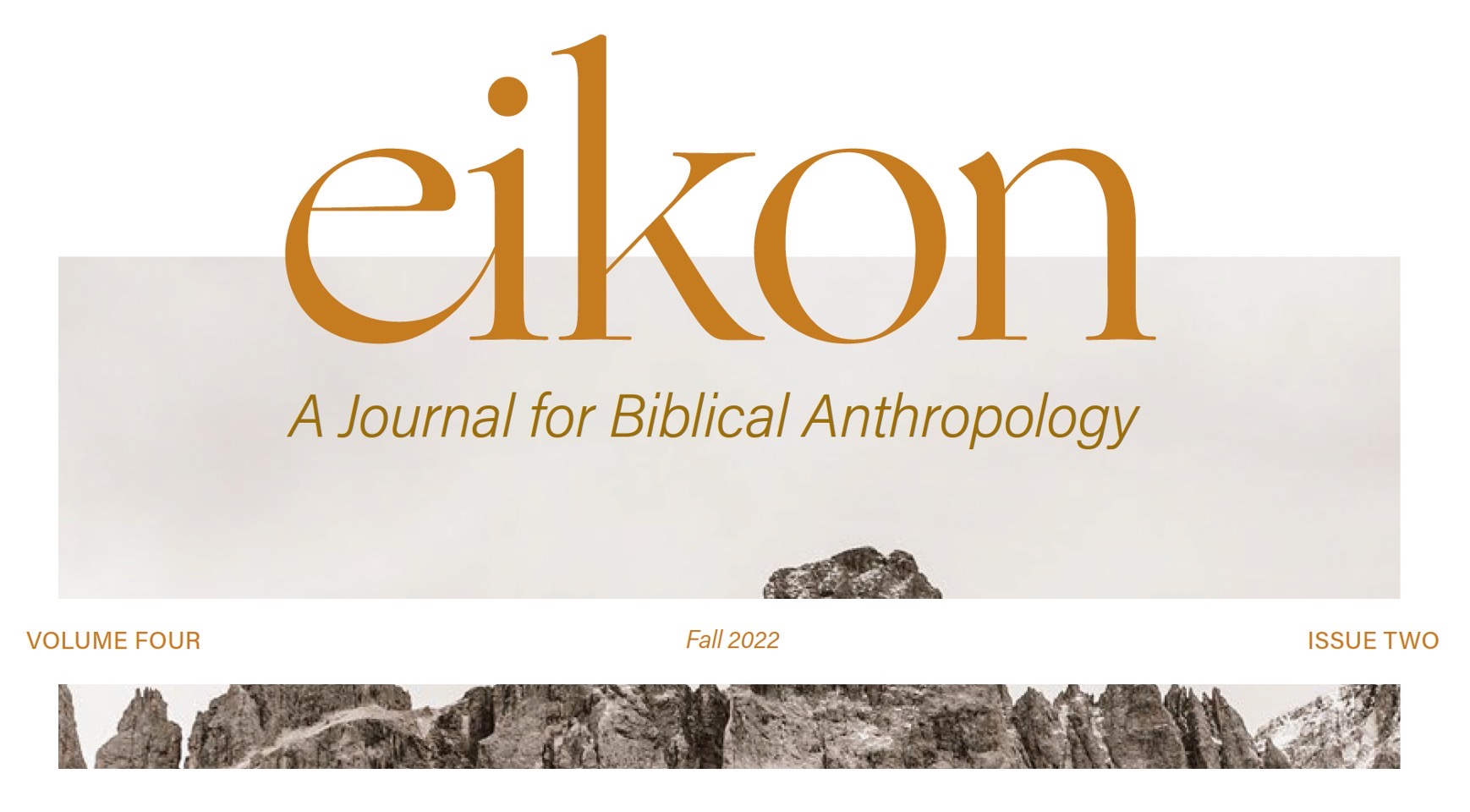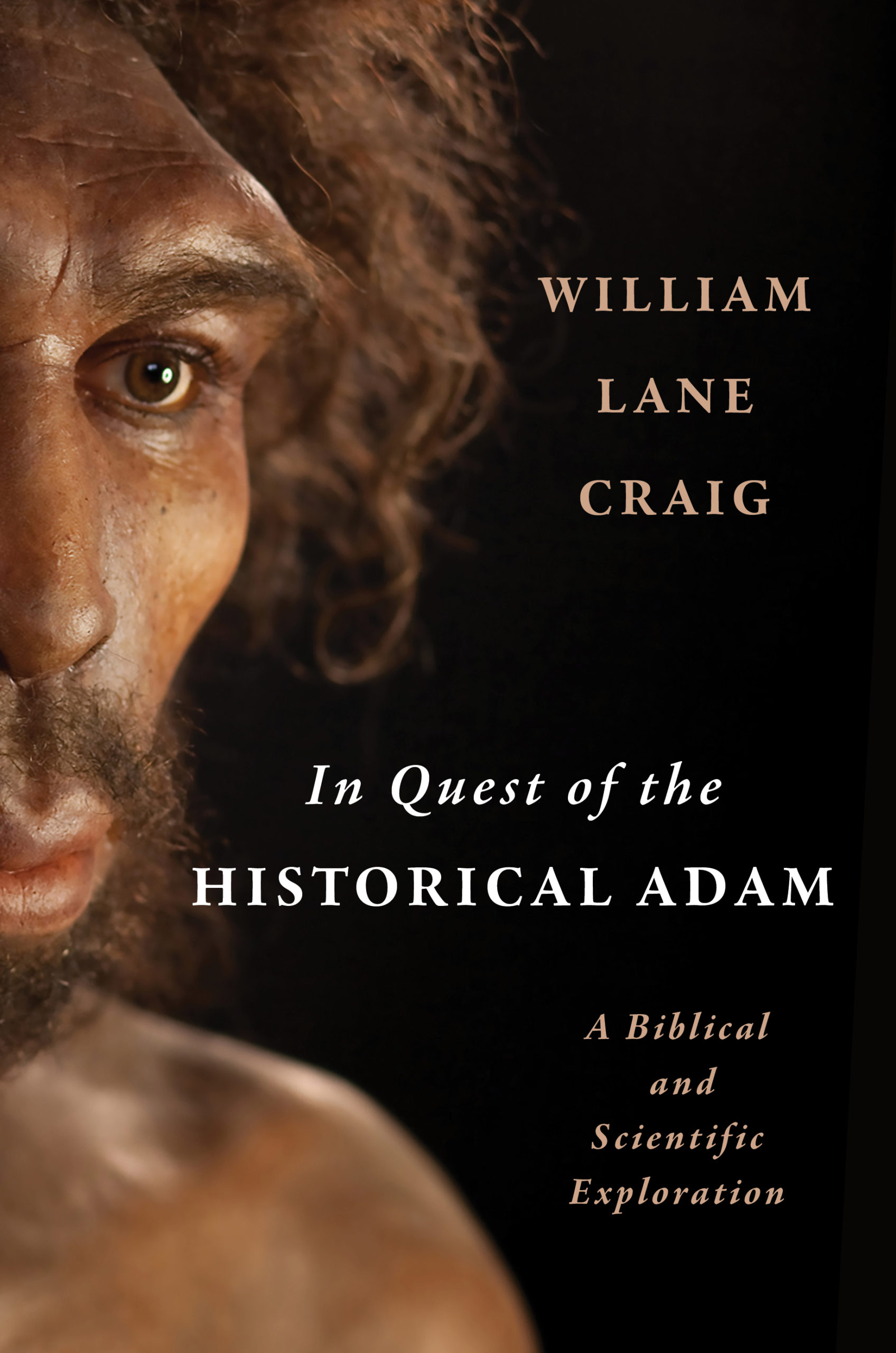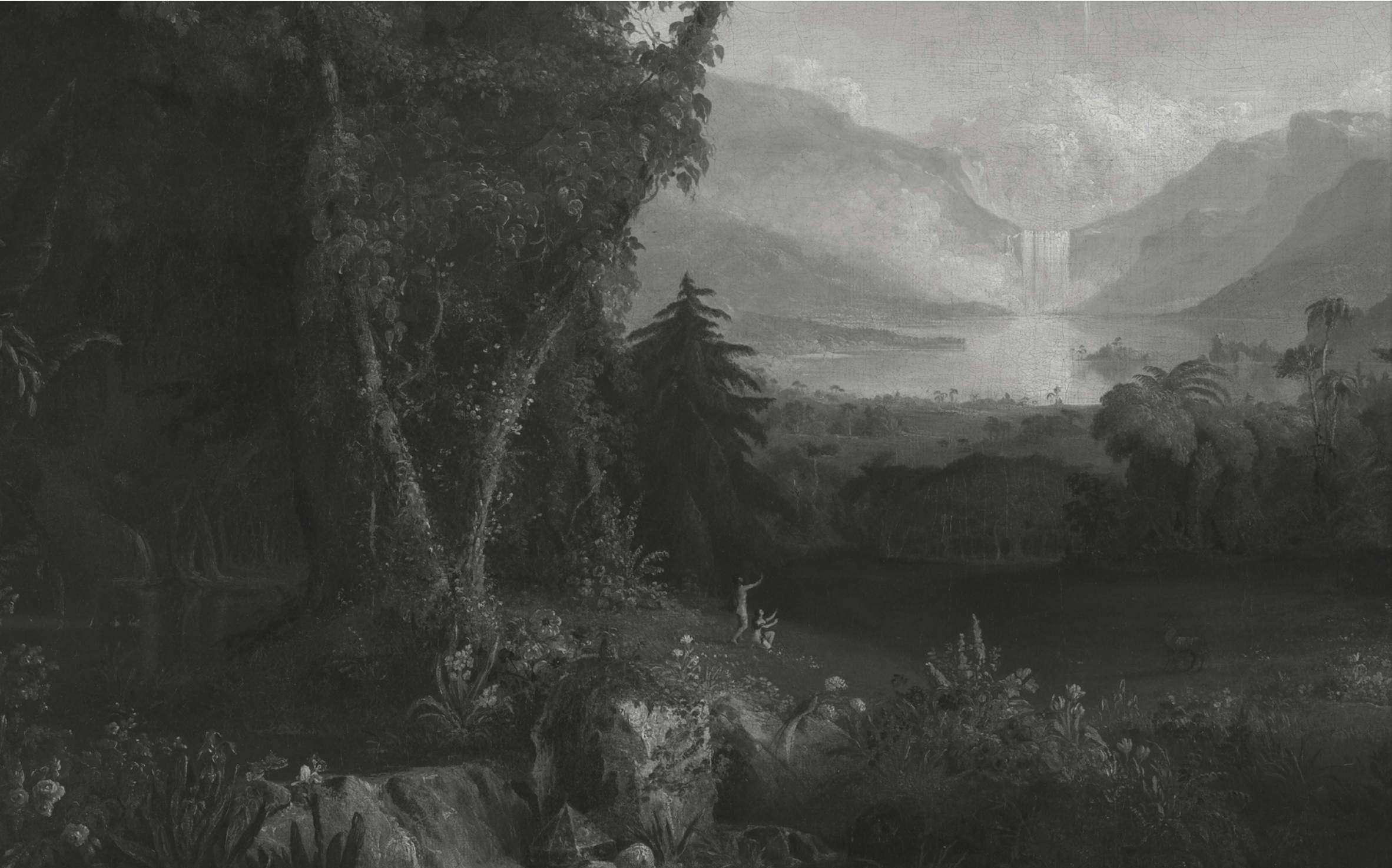Editors note: the following book review appears in the Fall 2022 issue of Eikon.

William Lane Craig. In Quest of the Historical Adam: A Biblical and Scientific Exploration. Grand Rapids, MI: Eerdmans, 2021.
 Introduction
IntroductionThe interpretation of the opening chapters of Genesis has been a subject of debate throughout the history of Christianity, but the urgency of the question increased with the publication of Charles Darwin’s Origin of Species in the mid-nineteenth century. Since that time, some version of macroevolution has been the consensus understanding of the biological diversity of life on our planet in the scientific academy. The academic consensus has also gained considerable purchase at the popular level so that it is accurate to say that biological macroevolution is the common understanding of the development of organic life, including human life.
It is not difficult to see why the prevalence of this scientific consensus puts considerable pressure on one’s Christian theological commitments. The issues involved are legion. If the first chapters of the Bible are understood as a straightforward historical narrative, with the “days” of creation constituting a literal evening and morning (that is, a 24-hour day), then the earth is necessarily far too young for the evolution of life on our planet according to the common understanding. Even if one interprets Genesis 1 in a way that allows for a much older creation (such as the “day-age” theory or some versions of the literary framework hypothesis), the theory of the development of biological life by means of evolution still seems to undermine the biblical account of the creation of Adam and Eve as qualitatively distinct from other life forms, bearing the image of God. For this reason, many who hold to an old earth view of creation reject the claim that evolution can account for biological diversity, especially the development of human life.
Furthermore, leading trends in paleoanthropology (the study of human fossils) and population genetics tell us modern man (Homo sapiens) emerged from multiple ancestral groups and regions, not from a single pair. This has become part of the evolutionary consensus. If true, what are Christians to make of the doctrine of original sin? If we are not all descended from Adam, how can we all be condemned in Adam (Rom. 5:18–19)? More importantly still, if the unity of the human species in Adam is not a matter of historical fact, then what of our redemption in Christ, which is typologically patterned after our condemnation in Adam (see Rom. 5:12–20 and 1 Cor. 15:20–59)?
The tension between evolutionary science and Christian doctrine is palpable and has generated massive debate, not only between Christians and a secular age, but among Christians themselves. At the center of it all is the question of the historicity of Adam and Eve. One very important book published recently on this topic is William Lane Craig’s In Quest of the Historical Adam: A Biblical and Scientific Exploration. This treatise is the fruit of many years of research and contemplation of the major biblical, theological, scientific, and philosophical issues at play. The result is a learned and fascinating tome sure to invite both admiration and ire from a wide range of invested readers.
This article will present a short overview of the conclusions of Craig’s Quest, followed by a biblical and theological critique of his views. It will be seen that the proposal has much to commend it but suffers from some significant weaknesses, leading to the conclusion that better options are available for how Christians should think and speak about Adam.
As a theistic evolutionist, Craig accepts without critique the evolutionary consensus, believing that God used the process of evolution to bring about biological diversity. However, unlike many theistic evolutionists, he affirms the actual historical existence of an original human pair, whom the Bible refers to by the archetypal names of Adam (the Hebrew word for “man”) and Eve (“mother of all living,” see Gen. 3:20). Furthermore, he sees the historical Adam and Eve as the biological progenitors of the entire human race.
In his opening chapter, Craig explores what is at stake in the question of Adam’s historicity. He acknowledges that many Christians have argued for the importance of this question from the doctrine of original sin in Adam, which they then link to the atonement by an appeal to Romans 5:12–20. Following this line of thinking, many Christians have concluded that the historicity of Adam is “a ‘gospel issue’ — that is to say an issue on which the Christian faith stands or falls” (5). Craig, however, finds this argument unconvincing, largely due to his rejection of the doctrine of original sin and his claim that the doctrine is not taught in Romans 5.
Instead of arguing from original sin and its ties to the atonement, Craig stakes the importance of the historical Adam on the inspiration and inerrancy of Scripture and the doctrine of the person of Christ. Numerous Pauline texts indicate that Paul believed Adam to be a historical person and wrote about him as such. Since all Scripture, including Paul’s epistles, is the very Word of God, Paul’s indication of Adam’s historicity must be taken as true. Otherwise, the standard doctrine of the inspiration of Scripture would need serious revision, something Craig is not willing to do.
Additionally, Craig observes that Jesus himself seems to have believed in the existence of an historical Adam (see Matt. 19:1–10). Craig argues that Jesus could not have held a false belief about Adam if he is true God, the second person of the Trinity. Though Jesus could have limited knowledge in his human consciousness, he could not believe falsehoods as an omniscient, divine person. Craig concludes, “Thus, as crazy as it sounds, denial of the historical Adam threatens to undo the deity of Christ and thus to destroy the orthodox Christian faith” (8).
What option is open for Craig if he is to maintain his commitment to both the orthodox Christian faith and the evolutionary consensus? He will offer an answer on both the biblical and scientific side of this question.
 Genesis 1–11 as Mytho-History
Genesis 1–11 as Mytho-HistoryCraig believes that the best moniker for the genre of Genesis 1–11 is mytho-history. That is, the opening eleven chapters of the Bible are not written as literal historical narrative. Rather, bearing the character of ancient near-eastern (ANE) myths, they are “traditional, sacred narratives set in a primaeval age, featuring a deity as a central character, that seek to anchor realities present to the Pentateuchal author in a primordial time” (131). However, unlike other ANE myths, the early chapters of Genesis have an “apparent interest in history” (132). This interest in history is evinced by the fact that the narratives progress by way of genealogies (the Hebrew word, tôlǝdôt, often translated, “These are the generations of” is a key feature of the text of Genesis). According to Craig, “By ordering the principal characters in lines of descent, the tôlǝdôt formulae turn the primaeval narratives into primaeval history” (133). Nevertheless, he goes on to warn, “It is important not to confuse an interest in history with historicity” (137). The accounts are marked by “fantastic” elements and inconsistencies that betray their mythological quality, but the characters themselves are real historical figures, of whom Adam is the first. Craig believes that the New Testament authors and Jesus speak about Adam in a way that demands his historical existence as a real person and the historical reality of his fall into sin. Craig helpfully summarizes his view regarding Genesis 1–11 as mytho-history in general, and the historicity of Adam in particular in the final chapter of the book:
While these narratives need not be read as literal history, the ordering presence of genealogies terminating in persons who were indisputably taken to be historical and the teaching of Paul in the NT about Adam’s impact on the world, which bursts the bounds of a purely literary figure, oblige the biblically faithful Christian to affirm the historicity of Adam and Eve (363).
By interpreting the text of Genesis 1–11 in this way, Craig leaves open the possibility of affirming the truthfulness and reliability of both the biblical text and the modern scientific consensus regarding evolution. Respecting the latter, however, there is another issue Craig must address. Based on the work of evolutionary paleoanthropologists and population geneticists, the current scientific consensus is not only that mankind evolved from lower life forms, but also that the human race as we know it today did not emerge from a single original pair. In Craig’s view, however, if all humans are not descended from a single pair, then the biblical teaching on the historical Adam is undermined.
Craig resolves this tension by making the case that we should “push the boundary for the origin of humanity back before the origin of Homo sapiens” (279). Based on a fascinating survey of evidence from the fields of paleoanthropology, paleoneurology (the study of the brain cavity of fossilized skulls), and archaeology (the study of ancient cultural artifacts), Craig concludes that anatomical correspondence with modern man, comparable brain size, and culture-making practices all lead to the conclusion that the hominin species Homo heidelbergensis possessed the requisite features to be truly human.
Craig proposes that God chose one male and one female from among the Homo heidelbergensis species to be endowed, miraculously, with a rational soul and thus made into the image of God. He brought the two together to become the biological progenitors of a new kind of creature — humans. Homo heidelbergensis (Heidelberg man) is widely believed to be a common ancestor to Homo neanderthalensis (Neanderthal man) and Homo Sapiens (Wise man, a.k.a., Modern man). Thus, while modern man may have emerged from multiple ancestral tribal groups and regions, true humanity should be seen to incorporate hominin species that predate modern man. Modern man, Neanderthals, and those of the Heidelberg class that descended from Adam and Eve should all be considered truly human.
According to Craig’s thesis, the possession of a rational soul, including the culture-making abilities that come with it, would have caused Adam and Eve and their descendants to isolate gradually from other heidelbergensian hominins who did not possess these qualities, resulting in a line of descent from Adam and Eve that is distinct from the progeny of non-human hominin groups.
By locating true humanity in the time period of Homo heidelbergensis, the timeline for the origin of humanity is pushed back much further than the emergence of Homo sapiens, making it entirely plausible that all humans descended from a single original pair. Craig summarizes, “Adam, then, may be plausibly identified as a member of Homo heidelbergensis, living perhaps >750 kya [thousand years ago]. He could even have lived in the Near East in the biblical site of the Garden of Eden” (336).
Anyone familiar with Craig’s larger body of work will know him to be a very careful thinker who grounds his conclusions in research that impresses for both its breadth and its depth. Furthermore, he is a tenacious defender of the Christian faith. Those qualities of his work are certainly present in this treatise. To read this book is to read a scholarly tour de force and to receive a thorough education on the current state of the debate about Adam from the perspective of multiple academic disciplines.
Furthermore, from a Christian theological perspective, Craig is to be applauded for defending the historicity of Adam and Eve as real persons who sinned concretely and historically, precipitating the problem of sin in the world and the need for redemption in Christ. His commitment to Christian orthodoxy means he is unwilling to concede the point, in spite of any tension it creates with the scientific consensus. For this I am grateful. That said, Craig’s proposal is not without problems.
The Importance of Original Sin. As noted above, Craig is dismissive of the line of reasoning that moves from original sin to the atonement by way of Romans 5:12–20. He is dismissive of the importance of the doctrine of original sin since, he claims, it is only purportedly taught in one passage (Romans 5), and he believes it is not actually taught even there (for his exegesis of Romans 5:12–20, see 226–241of the book). He avers that Christianity can “get along” without the doctrine of original sin, which is a mere “theological add-on to which the Christian theologian need not be committed” (6).
A few comments are in order. First, I imagine most readers of Craig’s exegesis of Romans 5 will be unconvinced. In any case, there is a long history of exegesis of this passage that has been convincing to the vast majority of Christians through history, and this exegesis leads to the doctrine of original sin. I personally find the traditional Reformed exegesis of this text to be far more compelling than Craig’s considering the language and context of the passage and its place in the larger storyline of Scripture. The fruit of this more traditional exegesis can be seen in the Reformed confessional heritage, including many Baptist confessions, which affirm a strong doctrine of original sin, citing Romans 5:12–20 as a proof text.
Secondly, Craig seems to misrepresent the importance of the doctrine of original sin in the history of Christian doctrine. Outside of the Trinitarian and Christological debates of the first four and half centuries, no doctrinal controversy had a more far-reaching impact on the development of subsequent Christian doctrine than the Pelagian controversy. Pelagius famously denied any real effect of Adam’s sin on his posterity and posited that man could receive eternal life by living sinlessly. Augustine was the mighty champion of the faith who most directly and successfully answered the Pelagian doctrine, largely by means of a robust and clear articulation of the doctrine of original sin, which Augustine himself believed to be the teaching of the church prior to this controversy. As is so often the case, the cauldron of controversy proved the occasion for the purification of the church’s articulation of her convictions. Pelagius was condemned at a number of regional councils and ultimately at the ecumenical Council of Ephesus (A.D. 431).
These councils did not produce a confessional statement on original sin, but their condemnation of Pelagius was largely the fruit of a clarified doctrine of original sin. The history of Christianity following this controversy reveals that the doctrine of original sin has been an immovable mainstay of Christian orthodoxy. Craig claims that orthodox Christianity can “get along” just fine without original sin (6), but this is a strange thing to believe when, in fact, the entire history of Christian orthodoxy, in all its major traditions, has gotten along only with some doctrine of original sin and never without it.
Thus, while Craig is to be applauded for recognizing the importance of an historical Adam, it is unfortunate that he dismisses the most common Christian argument for the importance of Adam’s historicity as a “gospel issue.” The case for the importance of Adam is much stronger if this traditional argument from original sin is retained.
Another potentially problematic aspect of Craig’s account is his proposal concerning Genesis 1–11 as mytho-history. To be sure, Craig is not the first conservative Christian scholar to argue for this kind of non-literal reading of Genesis 1–11. Nevertheless, some words of critique are in order. Craig acknowledges that Genesis 1–11 has an “interest in history” and that the key figures are historical persons based on the tôlǝdôt formulae in the account.
For Craig, Genesis becomes straightforward literal history beginning with Abraham in Genesis 12, but the tôlǝdôt formula continues to be an important literary feature in the text of Genesis after chapter 12. This puts Craig in the inconsistent position of having to affirm two very different meanings for the tôlǝdôt of Genesis 1–11 and the tôlǝdôt of Genesis 12–50. The former are non-literal and even bear “family resemblances” to mythology while the latter are literally historical.
Now, if there were some obvious feature in the text that indicated the different use of tôlǝdôt and the different way of accounting for history once the line is crossed from Genesis 11 to Genesis 12, then this would be fine. But there seems to be no such feature. In fact, later biblical authors give us reason to suppose that Craig’s dividing line between mytho-history (Genesis 1–11) and history (Genesis 12ff.) is an imposition on the text rather than a faithful reading of it. Craig himself acknowledges that Adam does not appear in Scripture again after Genesis 5 until 1 Chronicles 1:1. There, his name appears in a genealogy, and the genealogy crosses Craig’s supposed boundary from mytho-history to history without any indicator of doing so. It seems the Chronicler understood the genealogies of Genesis 1–11 to have the same historical character as the later genealogies. This understanding is further corroborated by the genealogy of Jesus in Luke 3:23–38. Jesus’ lineage is traced all the way back to Adam, again with no indicator of a different kind of genealogical record beginning with primaeval characters. The understanding of later biblical authors should make us skeptical of any major division of genre between the genealogical and historical records of Genesis 1–11 and those of Genesis 12 and following.
 As for a textual indicator for the division of Genesis, Craig appeals to “fantastic” elements in the text of Genesis 1–11. “Fantastic” elements are features of the narrative that are non-miraculous and, “if taken literally, are so extraordinary as to be palpably false” (104–105). Such features, according to Craig, include a talking snake and cherubim with a sword in Genesis 3, as well as the notion of an actual global flood event in Genesis 7–8, among other things. But if these so-called “fantastic” elements indicate that the text is not historical narrative, what is Craig to do with the presence of other seemingly “fantastic” elements in biblical texts that he takes to be fully historical? If a talking snake disqualifies the account as historical in Genesis 3, does a talking donkey disqualify the account as historical in Numbers 22? Why is the account of a global flood in Genesis 7–9 any more “fantastic” than the parting of the Red Sea in Exodus 14? Keeping to examples in the text of Genesis, we may ask, why is the presence of cherubim guarding the way to the Tree of Life in Genesis 3 any more “fantastic” than angelic visitors to Abraham and then to Sodom in Genesis 18? The list could go on.
As for a textual indicator for the division of Genesis, Craig appeals to “fantastic” elements in the text of Genesis 1–11. “Fantastic” elements are features of the narrative that are non-miraculous and, “if taken literally, are so extraordinary as to be palpably false” (104–105). Such features, according to Craig, include a talking snake and cherubim with a sword in Genesis 3, as well as the notion of an actual global flood event in Genesis 7–8, among other things. But if these so-called “fantastic” elements indicate that the text is not historical narrative, what is Craig to do with the presence of other seemingly “fantastic” elements in biblical texts that he takes to be fully historical? If a talking snake disqualifies the account as historical in Genesis 3, does a talking donkey disqualify the account as historical in Numbers 22? Why is the account of a global flood in Genesis 7–9 any more “fantastic” than the parting of the Red Sea in Exodus 14? Keeping to examples in the text of Genesis, we may ask, why is the presence of cherubim guarding the way to the Tree of Life in Genesis 3 any more “fantastic” than angelic visitors to Abraham and then to Sodom in Genesis 18? The list could go on.
Craig would likely say that the later features in historical narrative are examples of miracles and thus do not qualify as “fantastic” (for his discussion of this distinction, see 104–105). But what prevents the category of miracle being applied to the supposedly “fantastic” elements in Genesis 1–11? What about the text, for example, demands us to believe that the statement of a talking snake was just a normal and natural feature, as though the Garden of Eden were a Narnian meadow? Is it not equally reasonable, since no other animals are said to speak in the narrative, to assume that the speaking of the snake was a matter of supernatural interposition, much like the talking of Balaam’s donkey? Craig’s appeal to fantastic elements fails to establish a textual basis for rejecting the straightforward historicity of the first eleven chapters of the Bible.
One final point of critique concerns Craig’s uncritical assumption of the truthfulness of the modern scientific consensus regarding biological evolution. For many evangelicals, the evolutionary consensus is irreconcilable with the Christian faith. Given this, it is disappointing that Craig does not acknowledge the serious issue that many Christians take with evolutionary science, except to dismiss one version of evangelical creationism that takes exception with the evolutionary consensus — young-earth creation — as “wildly implausible” (13).
Serious, cross-disciplinary, scholarly work has been done by Christians with many different interpretive approaches to the creation account, demonstrating that the evolutionary consensus is not nearly as certain as the academic gatekeepers of the scientific community make it appear. The careful work of young-earth creationists, day-age creationists, and intelligent design theorists from the fields of biblical studies, theology, philosophy, and science has raised serious questions regarding the legitimacy of the evolutionary consensus. Such thinkers have proposed intellectually credible alternatives as well as critiques. The literature on this is voluminous, but perhaps the best single-volume comprehensive resource is the 2017 book, Theistic Evolution: A Scientific, Philosophical, and Theological Critique, edited by J. P. Moreland, Stephen C. Meyer, Christopher Shaw, Ann K. Gauger, and Wayne Grudem. Shockingly, this work appears nowhere in Craig’s bibliography, nor does he acknowledge any of the serious objections to the evolutionary consensus that is such a prominent feature of evangelical Christianity. This omission may give the impression that reconciling an historical Adam with evolutionary science is the only way forward for intellectually serious Christians, and that impression is false.
The question of origins is a contentious one between Christians and a secular world and among Christians themselves. Of all the issues involved, none is more important than the question of Adam’s historicity and the historicity of his fall into sin, precipitating the universal human problem of sin from which we need redemption through Jesus. In Quest of the Historical Adam is a fascinating treatment of the issue from the perspective of an orthodox Christian who affirms the modern scientific consensus regarding macroevolution. Some of the inherent tensions between orthodox Christianity and evolutionary science are resolved by this proposal, but numerous others remain. As such, I propose that there are better options available for intellectually serious Christians, options which do not include a wholesale embrace of the modern evolutionary consensus.
You, too, can help support the ministry of CBMW. We are a non-profit organization that is fully-funded by individual gifts and ministry partnerships. Your contribution will go directly toward the production of more gospel-centered, church-equipping resources.